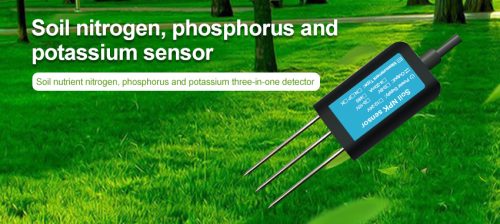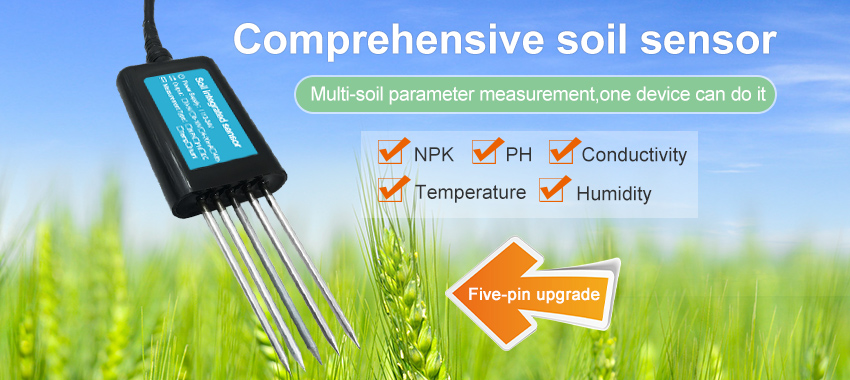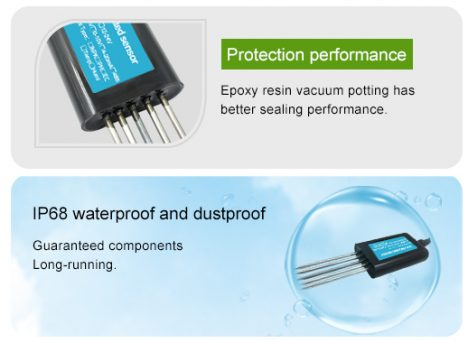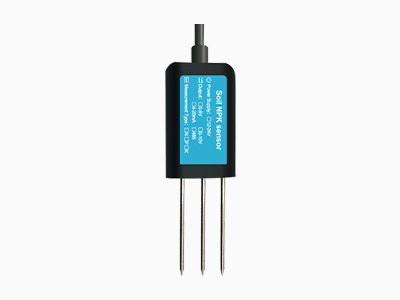Introduction to NPK Sensor
NPK sensor are cutting-edge devices measure and monitor the levels of essential nutrients in soil, namely nitrogen (N), phosphorus (P), and potassium (K). These sensors play a role in precision agriculture, enabling users to make the right decisions. Thus, fertilizer application can be optimized to improve crop yield. As the global population continues to grow, so does the demand for food production, so effective nutrition management is critical to agriculture. NPK sensors represent a significant advance in agricultural technology, providing real-time accurate information that minimizes environmental impact.
Principles of NPK Sensor Technology
NPK sensor utilize various technologies and measurement principles to assess the nutrient status of soil and provide actionable insights for farming. The following are some of the key principles and techniques employed by NPK sensors:

Electrochemical Sensing: Electrochemical sensors are commonly used to measure the concentration of ions in the soil, including nitrogen, phosphorus, and potassium. These sensors utilize selective electrodes that respond to specific ions present in the soil solution. The electrical signals generated by the interaction between the electrodes and the soil solution are then translated into nutrient concentration readings.
Spectroscopy: Spectroscopic techniques, such as near-infrared (NIR) spectroscopy and mid-infrared (MIR) spectroscopy, are employed in some NPK sensors to analyze the chemical composition of soil samples. These techniques rely on the interaction of soil components with light at different wavelengths, allowing for the identification and quantification of nutrients based on their unique spectral signatures.
Ion-Selective Electrodes: NPK sensors may incorporate ion-selective electrodes designed to selectively respond to specific ions present in the soil, such as nitrate, phosphate, and potassium ions. These electrodes generate electrical potentials in proportion to the concentration of the target ions, enabling the direct measurement of nutrient levels in the soil.
Wireless Connectivity and Data Logging: Many NPK sensors are equipped with wireless connectivity features, enabling real-time data transmission to cloud-based platform. This connectivity facilitates remote monitoring and data access, allowing farmers and agronomists to analyze soil nutrient data and make informed decisions with an internet connection.
Applications of NPK Sensors in Precision Agriculture
NPK sensors offer a wide range of applications in precision agriculture, providing valuable insights into soil nutrient levels and guiding efficient fertilizer management strategies. The following are some of the key applications of NPK sensors in modern agricultural practices:

Site-Specific Fertilizer Application: NPK sensors enable farmers to implement site-specific fertilizer application strategies based on the actual nutrient needs of different areas within a field. By mapping soil nutrient variability and using NPK sensor data, farmers can apply fertilizers more precisely, optimizing nutrient use efficiency and reducing over-application in areas with sufficient nutrients.
Nutrient Management Planning: NPK sensors play a crucial role in developing comprehensive nutrient management plans tailored to the specific requirements of different crops and soil types. By assessing the nutrient status of the soil, NPK sensors help agronomists and farmers determine the most suitable fertilizer types, application rates, and timing for maximizing crop productivity while minimizing nutrient losses.

Soil Health Monitoring:NPK sensors help to continuously monitor soil health by tracking changes in nutrient levels over time. This information facilitates proactive soil management measures. Such as targeted remediation efforts in nutrient deficient areas.
Crop Yield Optimization: Providing data on the availability of soil nutrients, NPK sensors optimize crop yields by balancing fertilization. Farmers can adjust fertilizer applications based on NPK sensor data, ensuring that crops receive the necessary nutrients for healthy growth.
Environmental Sustainability: NPK sensors aid in promoting environmental sustainability by reducing the risk of nutrient leaching and runoff associated with excessive fertilizer use. By facilitating precise nutrient application, these sensors help minimize the environmental impact of agriculture, contributing to the conservation of water qualit
Challenges and Considerations
While NPK sensors offer significant benefits for precision agriculture, several challenges and considerations should be taken into account when implementing these technologies:

- Sensor Accuracy and Calibration: Ensuring the accuracy and reliability of NPK sensor measurements is essential for making informed decisions about fertilizer management. Proper sensor calibration and validation procedures are critical to obtaining accurate nutrient concentration readings from soil samples.
- Data Interpretation and Integration: Effectively interpreting NPK sensor data and integrating it with other agronomic information, such as crop performance data and historical soil nutrient levels, requires expertise in data analysis and agronomy. Farmers and agronomists need to understand how to leverage NPK sensor data to optimize fertilizer applications and improve crop management practices.
- Cost and Adoption: The initial investment in NPK sensor , as well as the associated training and implementation costs, may present barriers to widespread adoption, particularly for small-scale farmers. Efforts to make NPK sensors more affordable and accessible to farmers of all scales can help overcome these barriers.
- Data Management and Connectivity: Managing and interpreting large volumes of NPK sensor data can pose challenges for farmers and agricultural professionals. Access to user-friendly data management platforms and support for wireless connectivity and data integration are essential for maximizing the value of NPK sensor .
Future Developments and Opportunities
The future of NPK sensors in precision agriculture holds promising opportunities for innovation and advancement. As technology continues to evolve, several developments and opportunities are anticipated in the field of NPK sensor technology:
Integration with Precision Farming Systems: NPK sensors become an integral part of precision agriculture systems and integrate seamlessly with technologies. This integration will enable comprehensive, data-driven decision-making for sustainable crop management.
Sensor Miniaturization and Portability: Advances in sensor miniaturization and portability will make NPK sensors easy to use, allowing soil nutrient monitoring in the field. Portable NPK sensors will empower farmers to collect and analyze soil nutrient data with greater convenience and efficiency.
Artificial Intelligence and Machine Learning: The integration of artificial intelligence (AI) and machine learning algorithms with NPK sensor data holds potential for enhancing nutrient management . AI-driven insights derived from NPK sensor data can help optimize fertilizer prescriptions and improve overall agricultural productivity.
Environmental Monitoring and Sustainability Metrics: NPK sensors may evolve to incorporate additional environmental monitoring capabilities. This expansion of sensor functionality will enable a more comprehensive evaluation of soil health and environmental sustainability metrics.
Conclusion
NPK sensors represent a transformative technology for precision agriculture, providing the ability to assess soil nutrient levels. By harnessing the power of NPK sensors, farmers can make informed decisions that positively impact crop yields, environmental sustainability. With the advancement of nitrogen, phosphorus and potassium sensors, their integration with precision agriculture systems will further promote the development of agriculture.
